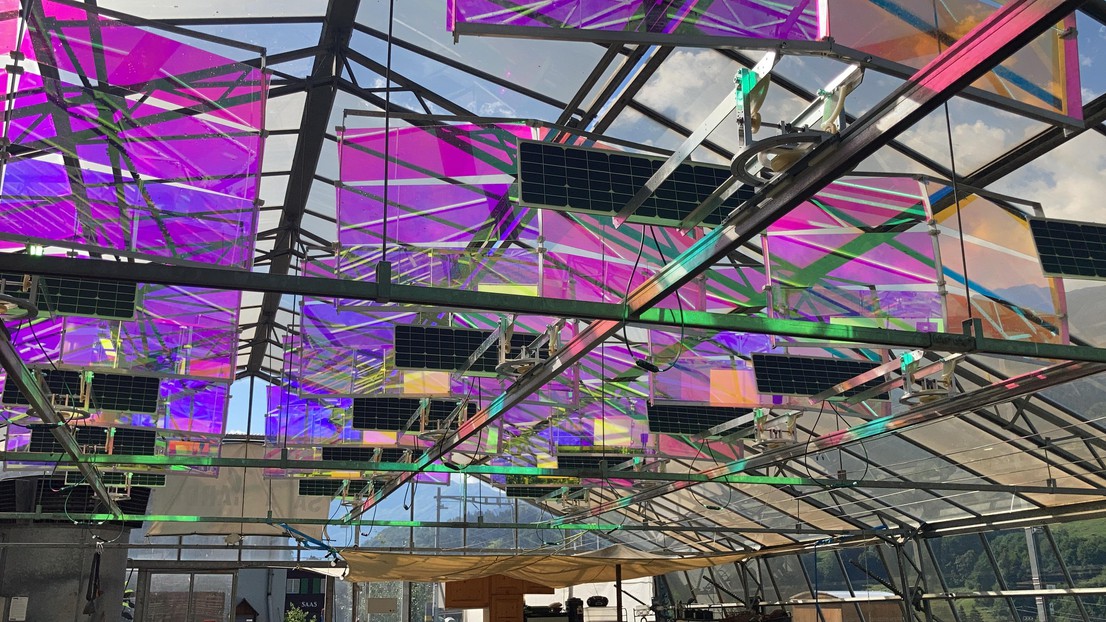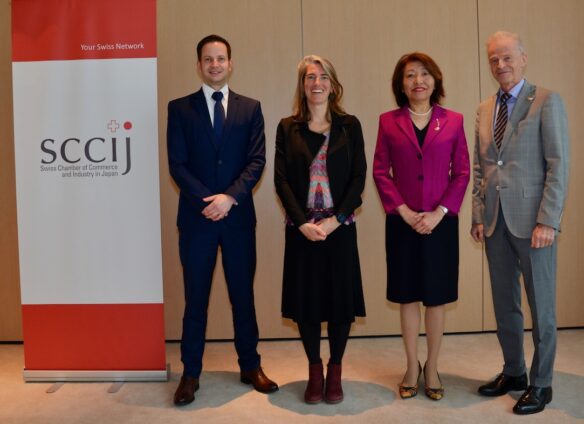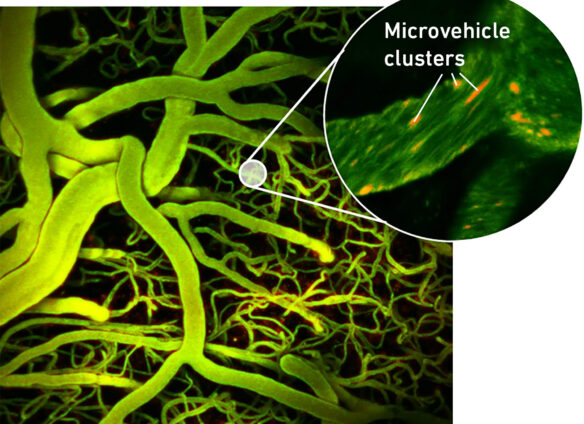Tokyo (SCCIJ) – The start-up Voltiris from Lausanne proves that food and energy can be produced simultaneously. The innovative idea of this young enterprise from Switzerland: Solar modules splitting the spectrum of light as it enters greenhouses, harvesting sufficient electricity to heat the greenhouse.

Greenhouses can run on the energy provided by Voltiris' solar modules (© 2022 Voltiris).
Climate-friendly farming
In Switzerland, growing tomatoes, cucumbers, peppers, and other light- and heat-intensive vegetables requires building a greenhouse – but operating one consumes a huge amount of heating energy. Farmers have to carefully balance crop yields and economics with environmental concerns.
“It costs more than CHF 1.5 million a year to heat a 5-hectare greenhouse,” says Nicolas Weber, the CEO of Voltiris. “And a greenhouse of that size emits roughly the same amount of CO2 per year as 2,000 people.” Hence, the Swiss federation of fruit & vegetable growers, which cultivate several thousand hectares across the country, has set a target of eliminating all fossil-fuel-based energy from its farming processes by 2040.
Stable crop yields
The system developed by Voltiris can go a long way toward reaching that goal. Pilot tests of the new system have shown that they should be able to cut the greenhouses’ CO2 emissions in half while providing between 60% and 100% of their energy needs depending on the heating system in place. What’s more, the system generates this renewable energy without reducing crop yields, since plants still receive all of the sunlight they need.
Its technology is based on the fact that plants don’t use all of the waves contained in sunlight; the remaining ones can be concentrated onto photovoltaic cells to generate solar power. Plants are relying on red and blue light. Voltiris’ filters, therefore, let these wavelengths pass through while directing the other wavelengths (green and near-infrared) toward photovoltaic cells where they’re converted into solar power.
Double breakthrough
Two patented inventions are what make Voltiris’ system unique and able to perform so well. The first is an optimized optical system that effectively concentrates sunlight, and the second is a solar-tracking device designed for under-roof use, which extends the length of time the system can produce solar power by 40%.
Thanks to these breakthroughs, the system can achieve yields similar to those of conventional solar panels but with only half the light waves – i.e., green and near-infrared light. The lightweight installation fits into the space between the roof of the greenhouse and the top of the plants.
Government program
Voltiris’ innovation comes at an opportune time, as the Swiss federal government has rolled out incentives over the past few years to encourage greenhouse operators to reduce their reliance on fossil fuels for heating. These incentives include subsidies for clean-energy systems.
But existing alternatives, such as wood, biofuel, and geothermal power, probably won’t suffice. The technology developed by Voltiris promises to be an attractive solution. The firm now plans to run more pilot tests in the Netherlands and Geneva before introducing its product on the market in the second half of 2023.
Text: © Cécilia Carron/EPFL





























